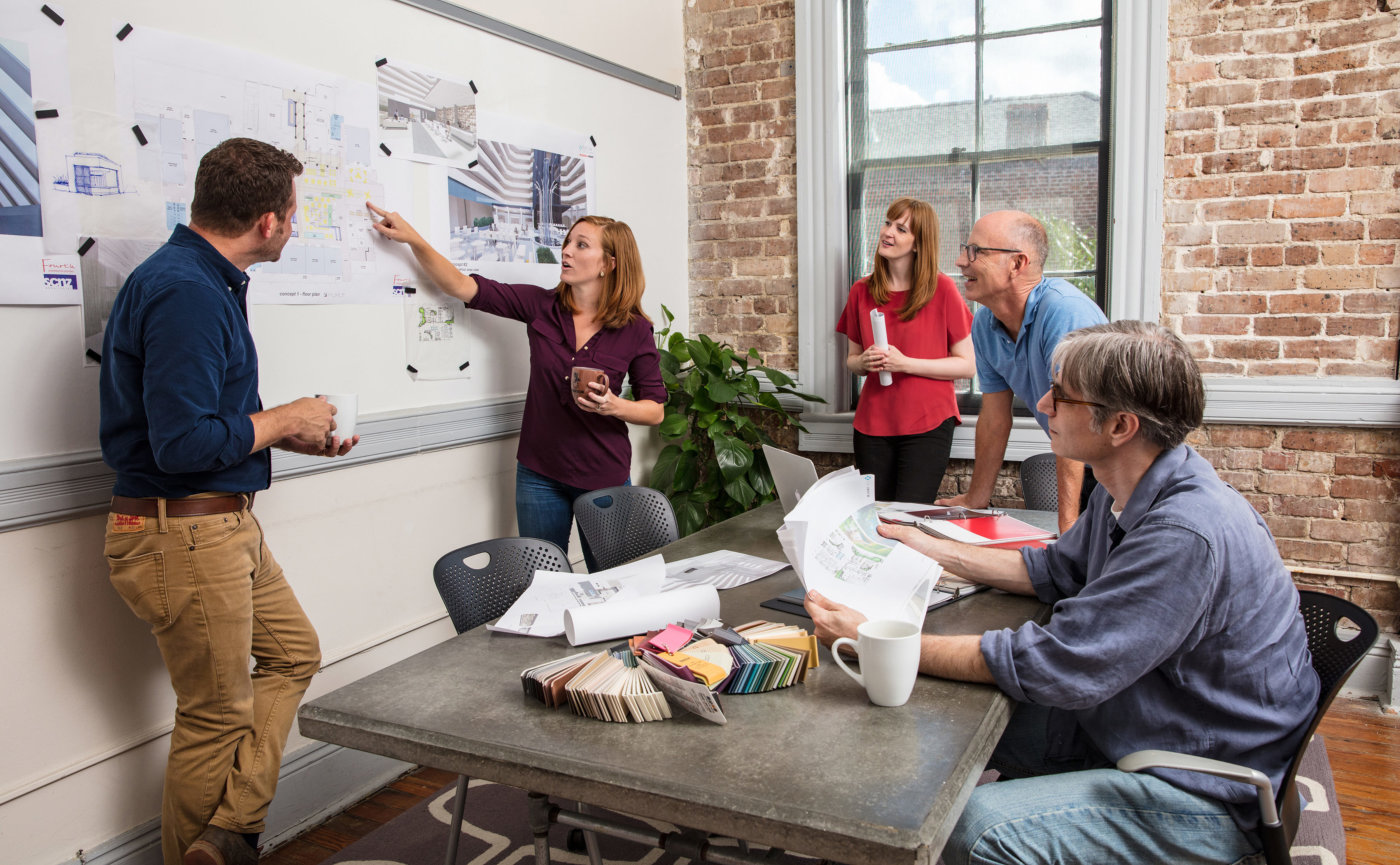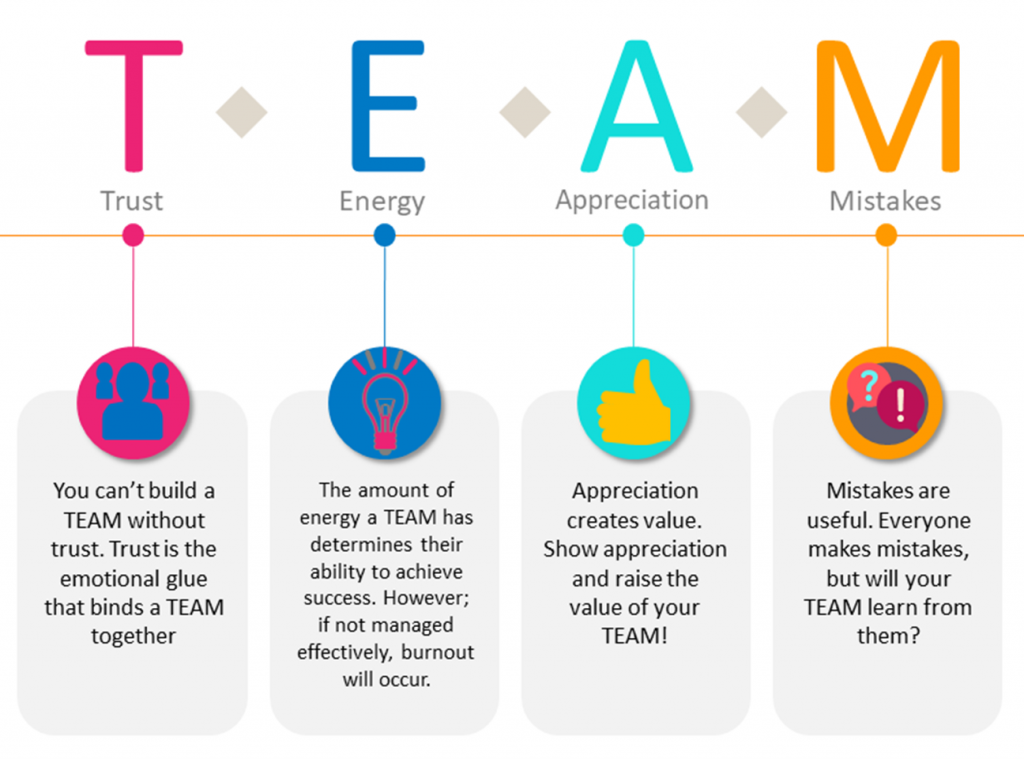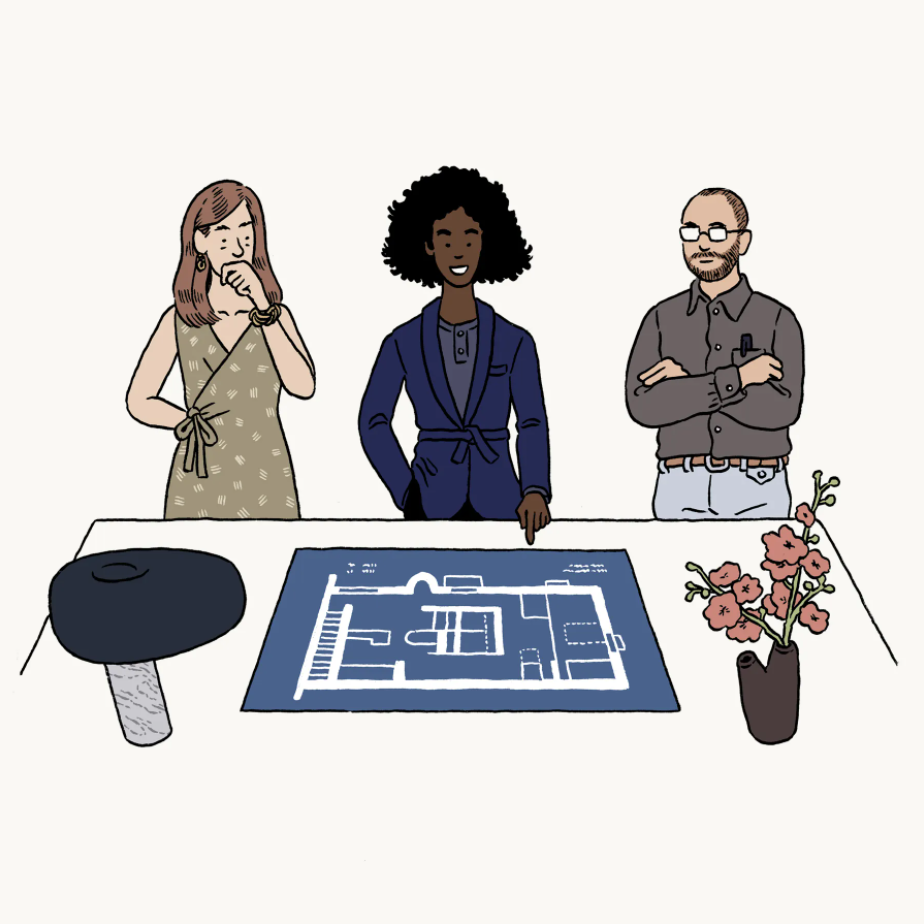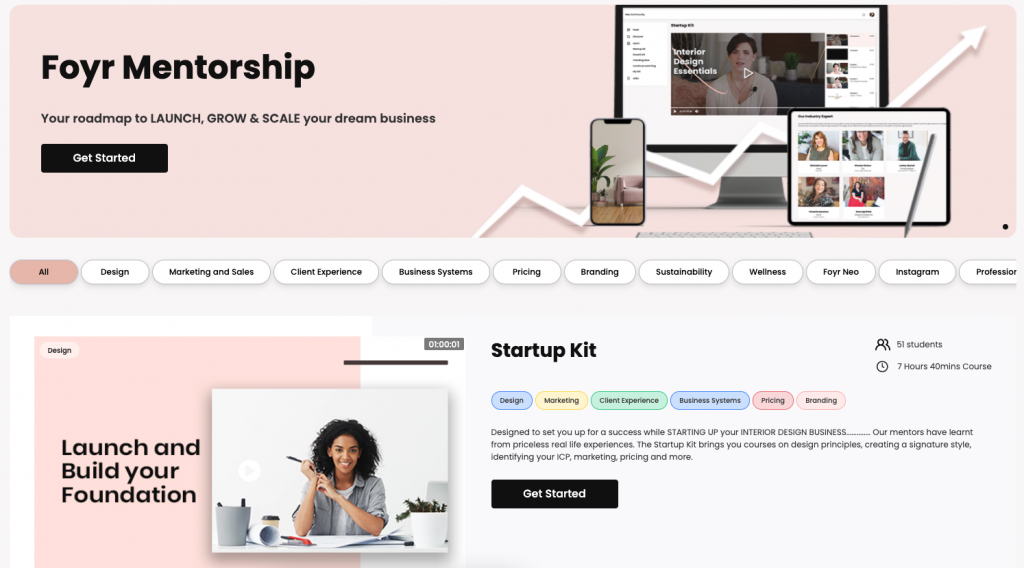Interior Design Team
If someone wishes to develop a distinctive architectural agency, it is essential to have a good team of interior decorators. Putting together a personal team will ensure that the office is profitable. A healthy team will guarantee that the project is completed on time and within budget. The team’s chances of losing the project increase when there is poverty.
So, while putting up an interior designer team with a diverse variety of interior decorators, it’s crucial to understand essential principles and put them into practice throughout the creation stage. To satisfy the designer’s criteria, each team of interior designers should be regarded as a valued asset. When it comes to the industry of architecture, they are quite significant.
Read also – The Complete Guide To Interior Design Project Management
What is the Purpose of a Team?
A team’s purpose is the driving force behind why employees perform what they do. Employees might feel more motivated to work and have a collective identity if they have a clear understanding of what their team is striving toward. Understanding how to build a more purposeful team will help your company recruit and retain talented employees.
The rationale for a team’s actions in their company is the team’s purpose. This is what helps them stay focused and motivated while they work toward their company’s objectives and ambitions. The team’s motive is why they exist, and it may help people stay motivated at work. Organizations form teams of skilled persons to achieve a common goal.
Read also – How To Become An Interior Designer?
Image Credit: leaderinfluence.net
Why having a great design team is important for the interior design business?
Having a great team allows you to collaborate with others on a common objective. In this manner, your company will be able to meet its commercial objectives. In a nutshell, good teams increase the efficiency of work. This can lead to greater profitability and a variety of advantages. In teamwork, many persons are responsible for the same objective in cooperation.
Most crucially, coworkers are aware of and rely on one another’s work quality. When one team member’s performance suffers, the others are equipped with the information and incentive to assist them in improving. Effective teams can frequently regulate their own performance without the need for management intervention.
Read also – 35 Best Collaboration Tools for Interior Design Business
Design Team Structure for the Interior Design Projects
A design team can range from a single person working on design initiatives throughout an organization to a group of 50 or more designers. One can choose between three typical structures: centralized, cross-functional(embedded), and flexible.
A centralized design team indicates that most of the authority and decision-making abilities are concentrated in the hands of one or a small group of persons; they are said to be the major decision-makers. Decision-makers in a centralized team structure are usually in the same physical place.
The cross-functional design team continues to conduct functional team meetings, they’re integrated with other teams inside the business, such as engineering and product.
Read also – The Pros and Cons of Being An Interior Designer
Image Credit: architecturaldigest.com
Instead of merely collaborating with other designers to accomplish a project, they will collaborate with other important business groups to complete the task. This paradigm fosters confidence and collaboration across groups, which may lead to better business efficiency.
Working in a flexible team structure, it’s crucial to keep track of the design team talents you currently have. Some design projects, for example, are likely to be larger than typical and will necessitate more time and resources to accomplish. Such production waves might be challenging to manage with a fixed team.
Expanding from a tiny team of 2-3 to an office of approximately 10 might be a frightening prospect, but the secret to success, is careful planning, attention to detail, and patience in execution.
Understanding the key positions that compose the foundation of an interior design business as one begins to construct the schematics of their ideal future team to define the ultimate objective before planning accomplishment. It should be noted that these occupations are not mutually exclusive, but rather reflect functions that most small to medium-sized businesses require.
Read also – Interior Design Business Legal Structure
List of Interior Design Team Members and Key Positions
The following is a list of the interior design team members and key positions:
a) Chief Executive Officer (CEO) – The CEO of an interior design firm is often, but not always, the business founder and lead designer. The CEO’s core tasks include team leadership, making all significant business decisions, and overseeing operations and corporate resources.
b) Lead Designer – This position is often held by the founder of an interior design firm and is in charge of the creative vision that underpins all of the company’s work. The lead designer is also in charge of the design assistants, who are in charge of creating the essential drawings and client presentations.
c) Designer – This position assists the lead designer with all creative and design-related activities, and it may entail experience and supervisory responsibilities.
d) Project Manager – The project manager controls the workflow and ensures that each step of each project is completed within the budgets and schedules specified. This function is a combination of creative and operational in nature, since it requires a thorough understanding of the design process but is ultimately a business-oriented role. From the conceptual stage through the final installation, the project manager implements the right order of operations for each project.
e) Chief Operations Officer (COO) – The COO is in charge of overseeing all company management, accounting, and financial responsibilities. The COO is in charge of everything that isn’t linked to design. The bookkeeper, office manager, marketing, HR manager, and administrative assistance may also fall within the purview of this position.
f) Book-keeper – This position is responsible for keeping records of company transactions and coordinating financial reporting needs.
g) Office Manager – The office manager is in charge of all administrative activities, such as monitoring the corporate calendar, stocking supplies, arranging events, keeping working spaces clean and safe, and always looking for cost and efficiency savings on supplies and utilities.
h) Administrative Assistants – This position is responsible for a range of tasks, including managing the schedules of the design team and key operational managers, answering the phone, and handling company-related logistics.
i) Marketing Development Director – This role is in charge of creating and implementing a marketing and sales strategy that raises the profile of an interior design business while bringing in new clients and other profits.
j) Human Resources Manager – The HR manager is in charge of a company’s day-to-day operations, such as recruiting and firing employees, payroll and benefits, and managing employee relations.
Read also – 17 Types of Interior Design Businesses and Specialized Fields
Benefits of Building an Effective Interior Design Team
Team building is an essential method that managers may utilize to help their staff perform more efficiently. When team members form positive relationships, they may feel more at ease expressing their ideas and addressing challenges creatively. There are several advantages to building an effective team.
An effective interior design team may assist a company in increasing productivity by motivating people to collaborate toward a single purpose in order to achieve objectives. When members of a team feel linked, they are more inclined to put up the best efforts in their work.
Because team members may contact one other often and offer updates on their progress, this may also assist avoid redundant work. The team may help organizations better understand one other and foster more open communication. This can assist enhance staff efficiency and making it easier to share ideas.
Working on a team-building exercise together may bring team members closer and boost collaboration. This may contribute to the creation of a safe work environment in which workers believe they can seek the aid they require while also assisting others. Consider planning a team-building event that benefits a cause that the organization supports to develop collaboration on the team.
Read also – Guide To Profit Margins for Interior Design Businesses
Image Credit: wrike.com
15 Best Ways to Build an Effective Team for your Interior Design Projects
Interior design management wants a team which they can trust to complete their tasks properly and regularly so that they may plan broader movements to defend and build their firm. Your team’s composition will be unique to your requirements, but there are certain basic processes to locating and optimizing the talent available to you. Here are 15 tips to help you establish a dependable team that is committed to your success.
1. Set organizational objectives and start to plan
Set your goals clearly, such as gaining more clients or boosting the performance of your next marketing effort. Then, analyze prior efforts and your present situation to identify what you need to do to solve these problems.
Following that, you should start developing a strategy to fulfil these objectives. People, processes, equipment, and partnerships are all covered in plans for achieving all of your goals. This will aid you in identifying any gaps or changes that should be addressed.
Read also – Editorial Calendar for An Interior Design Marketing Plan
2. Define your team's roles
Making your strategy will provide you with a list of business requirements. Address them by identifying who is in charge of each part of your objective. These responsibilities correspond to the specific positions required by your team.
If you already have a team, determine who can fill each job and change responsibilities accordingly. When hiring, look for skill sets that match each job as well as the experience needed to complete those tasks. Defining roles and duties may make or break your team’s success.
When the need comes, people will know who to turn to for assistance. Roles also assist your employees in understanding how their performance will be evaluated. Meeting such objectives may raise morale and increase the likelihood of your company’s success.
Read also – Best Cities and Countries for Interior Design Jobs
3. Make the most of your team member's abilities
A great leader understands and exploits each team member’s abilities and strengths. Examine each member of your team’s talents, including their strengths and limitations. Giving someone who excels where they struggle might help to maintain morale and reduce workplace discontent. A successful leader must also recognize areas where people have complementary abilities that complement one another.
4. Embrace diversity
The capacity to listen is one of the most important for any manager or leader. Allow your team members time and space to express themselves, especially when it comes to issues of diversity. This will assist you in better understanding how you can satisfy their wants.
You want team members that come from a variety of backgrounds and who can complete things in a variety of ways. Inherent traits such as age, ethnicity, and gender identity are covered, as are taught or acquired features such as life events, socioeconomic situations, and communication style.
Read also – How To Market Yourself As An Interior Designer?
5. Set expectations from the very start
You’ll want to explain to your team what it takes to fulfill their objectives and criteria effectively once you’ve set positions. Position expectations, as well as work on particular projects, assist your staff to understand their responsibilities. Setting clear objectives from the start can assist you in keeping projects on track and shepherding them to completion.
It also helps eliminate delays and complaints from those who didn’t understand they were in charge of a task. Communication is crucial for setting expectations. Tell them what you need and how to get started. Set times for your staff to bring concerns to you if they are self-sufficient. If any of your team members are new to their jobs or the workforce, make sure they understand how to keep you and the rest of the team up to speed on their progress.
Read also – 10 Best Client Management Tips for Interior Designers
6. Allow your team to explore and take chances
Taking risks allows your team to develop and find new ways to solve challenges. You could discover something that performs better or is less expensive than current approaches, or you might even discover a new business opportunity.
There is no such thing as a risk or an experiment that assures a favorable outcome. Your role as a manager is to steer these efforts in a way that is both fair for your organization and protects the bottom line. Allowing someone to take a risk, on the other hand, should be rewarded regardless of the outcome.
Encourage them so that people are more willing to try new things. You’ll also get to watch how various workers manage their job once they’re in control, which will help you better grasp their strengths and flaws.
Read also – KPIs for Interior Designers
7. Both accomplishments and failures should be celebrated
You’ll want to reward your teams for taking risks, in addition to allowing them to do so. When your team achieves a goal, appreciate them. You wouldn’t have been able to do anything on your alone, so thank them and appreciate their efforts. Performance is the basis for acknowledgement.
You should congratulate them on their accomplishments or on their work. The emphasis of appreciation is on the individual. This might be anything as simple as someone’s willingness to try new things, their friendliness, or their ability to help the rest of your team to thrive.
Read also – Self-care for Interior Designers
8. Encourage personal growth
It’s highly probable that your team members desire to advance in their positions, skills, and careers. Many people will find fulfillment in their employment. Encourage them to improve in their professions and grow as individuals rather than just employees by encouraging them to go on to the next step. Employee development may also help your employees learn the skills they need to keep the organization on its upward trajectory.
9. Employees should be empowered
Staring over your team’s shoulder all the time might make them nervous and make them more concerned about you than about performing their responsibilities. If you read every email, listen to every phone call, and interrupt at any moment, they will lose faith in you.
Both their performance and your turnover rate will be limited as a result of this. Allow people the independence and self-determination they necessary to execute their work in accordance with the criteria of their roles.
Read also – How To Start An Interior Design Business?
10. Encourage positivism in your team
How you handle challenges in your team will have an impact on how much faith they have in you and each other. Respectfully support your team and lend a hand when they need it. While negativity may produce short-term rewards, it has a detrimental long-term influence on institutions. Maintaining a pleasant attitude can help you build trust and make your employees feel safe.
11. Create a strong leadership team
As a manager, your ultimate objective is to be a good, strong leader. By strong leadership, we mean the ability to bring your team together to achieve shared goals while also motivating people to excel in their individual fields.
Strong leaders manage more successful teams, communicate more effectively, and handle difficulties more rapidly. You’re not only leading by example, but you’re also encouraging employees to appreciate and take pleasure in their job, which leads to increased productivity.
Read also – 12 Best Time Management Tips for Interior Designers
12. Make a culture of cooperation
Your team will be more productive if they have a common vision of what they want to accomplish. Putting all on the same page on the goals and how they’ll be met allows for more collaboration and planning. Creating a large image helps everyone comprehend what you’re trying to accomplish and encourages them to take chances in order to get there.
A common set of aims, ideas, and attitudes defines a company’s culture. It specifies what you want your team to accomplish, how you plan to reach those objectives, and how team members will interact.
Read also – 10 Online Reputation Management Strategies for Interior Design Business
13. Teamwork should be encouraged
People get to know one another and create bonds that enable them to work more successfully together. Your role here is to plan some activities for your team to participate in, not only icebreakers, and to oversee them keep things acceptable and good.
Asking individuals what they did over the weekend or what they’re watching might be short and straightforward interactions. You may also become more active and participate in some lighthearted team building activities to make everyone feel more at ease with one another.
Read also – How To Create Interior Design Packages for Your Business?
14. Communication should be frequent and effective in between team members
Communication is the basis for every other item on the checklist. Effective communication establishes goals for your team, encourages them, and allows you to see problems before they become major difficulties. Something as easy as inquiring about a project’s progress or whether there’s a bottleneck can help you solve a problem and remind your team that you’re there to help them succeed.
If you communicate effectively, your happiness and celebration will be received as well. Consider how you may express your appreciation to someone in person and share it with the rest of the team. Rather than blaming someone for taking a risk, assemble the team to discuss what went wrong and how to improve in the future.
Read also – 15 Problems Most Interior Design Business Faces
15. Prepare a training document in advance to ensure a smooth onboarding process
No matter how impressive your new employee’s résumé is, they won’t know what to do the first time they come across your company. They require extensive instruction and good on-boarding. If you don’t make time for proper training, you may not be able to build a good team.
It’s also an excellent time to reflect on how you’ve built your company so far and where you see opportunities for development in the future. Your team’s and your own training should be continual. Technology is always evolving, and your workforce must be prepared to capitalize on its advantages through ongoing training programs.
Read also – How To Create An Interior Designer Resume?
Why Form an Interior Design Team to Renovate?
Many people begin their renovation endeavor by hiring a builder or contractor. While this is undoubtedly a possibility and meets the fundamental need of getting it built, it may jeopardize the end result if you do not engage a design professional.
Some people hire a builder because they have no clue how much their renovation project will cost, but without a design and general selections and finishes, the estimate will never be correct.
The role of an interior designer in a renovation project is to choose materials and fittings that complement your overall style and work with the rest of the house. A designer is also skilled in space planning and ensuring that your area is optimized for the intended function.
Read also – Importance and Role of Interior Design in Society
1. Creating a hiring strategy
Before you hire, you must first assess what your urgent personnel needs are and where you are currently failing to achieve your commitments. You must prioritize which roles you will fill first, recruiting just one new employee at a time, in accordance with the expansion of your profit margins.
In addition, understanding cause and effect in recruiting is crucial to scaling your staff in line with growth. Consider the long-term consequences of your employment decisions, and make sure you have the infrastructure in place to deliver high-quality service as the volume and complexity of projects increase.
2. Ways to improve your design team
What is effective for one team may not be effective for another. It is essential to try new techniques for your team in order to improve your procedures, communication, and overall output. To get the best out of them, you must provide them with the best tools.
Moreover, you must determine how you want to structure your team. When assembling and optimizing your design team, start by selecting experienced design leaders who can create and communicate a vision, and motivate both the design team and the organization.
3. To develop a strong team, motivate with optimism
Positive reinforcement is more effective than negative reinforcement in shaping behavior. Refrain from criticizing team members’ faults. Instead, foster a pleasant work environment by highlighting events and behaviors that you especially like and encouraging your team to bring more of the same. Positive reinforcement is significantly more effective than condemning individuals who make mistakes in team performance.
4. Attributes of a successful team
Whenever we talk about a successful team, we mean the one that works well together, achieves corporate goals and is encouraging to one another. To collaborate, teams must share goals and outcomes. Because your team is goal-oriented, it will naturally gravitate toward greater collaborative activities in order to achieve that shared objective.
Communication is important for completing any task. Great teams, on the other hand, go a step farther by being honest about what works, where problems exist, and how to improve things. When leaders endeavor to maintain communication positive and productive, their teams thrive and work together to complete projects.
Read also – Business Structure For Your Interior Design Business
Why Joining Communities has its Advantages:
Being a part of a community has several advantages. It is a responsibility of an interior designer to make a client’s aspirations a reality. Bringing ideas to reality entails convincing clients to accept and approve the entire vision and direction for their house, office, or other initiatives.
Foyr Community is a fast-expanding online network of interior design experts and entrepreneurs. One can explore each other’s work portfolios, ask questions, seek mentorships, discuss ideas, and even find employment and cooperation possibilities by using the site to discover and communicate with interior designers.
Conclusions
Every team dynamic is unique. The qualities of its members, as well as the management style, have an impact on teams. However, the characteristics of a successful interior design team are the same across the board. Mutual respect shared and aligned goals, open communication, and patience may all contribute to a team’s success.
Any successful firm relies on a strong team. The capacity to attain goals at work necessitates teamwork. Whether you are already a member of a team or are planning to join one, building excellent collaboration skills will help you thrive in your career regardless of your level or sector.
FAQs
1. How do interior designers manage their teams?
Transparent working settings have been shown to increase team accountability, happiness, and creativity. Good communication is the foundation of a cooperative and effective team. The goal is to establish an atmosphere in which team leaders feel comfortable providing honest and constructive criticism, and team members feel comfortable raising problems and communicating with one another. Interior designers efficiently manage their teams by encouraging team members to participate.
2. Do interior designers work in teams?
A skilled interior designer can transform a place from drab to fab. Many interior designers operate on their own or in small teams, thus their duties might range from installing light fixtures to cleaning a carpet.
3. How many employees do you need for interior design?
Once someone has developed a well-thought-out, financially solid hiring strategy, they’ll be able to scale their team from 1-2 individuals to a mid-sized office of 10 employees. They need to keep a close check on money and reconcile anticipated to real profits on a regular basis. Adhering recruiting strategy will need patience and resourcefulness as they try to increase company income in order to pay for new workers.
4. What are the positions in interior design?
The key positions in interior design are chief executive officer (CEO), lead designer, designer, chief operations officer (COO) and project manager. The other positions in interior designing are human resources manager, office manager, administrative assistant, marketing development director and bookkeeper.












